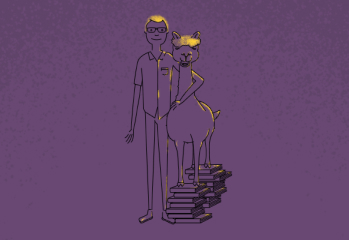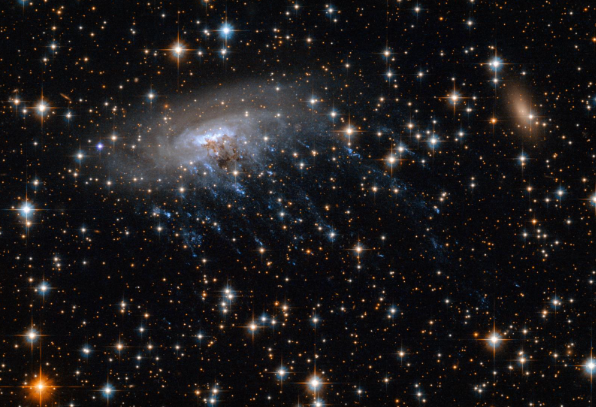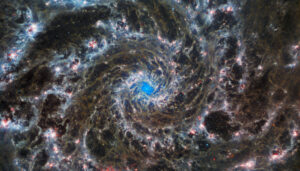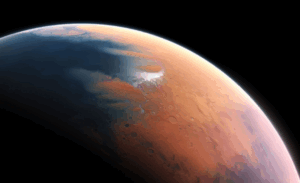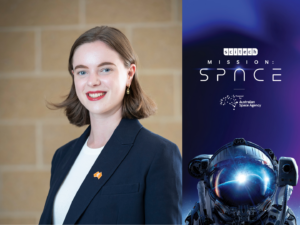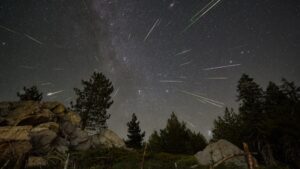The Casual Observer
August brings us into the season of Djilba. This is a transitional period where winter continues but eventually gives way to new growth.
The Milky Way continues to dominate the night sky no matter where you look. The further you can get away from any lights, the better. Look to Scorpius and Sagittarius to identify the middle of the galaxy with its bright star fields.
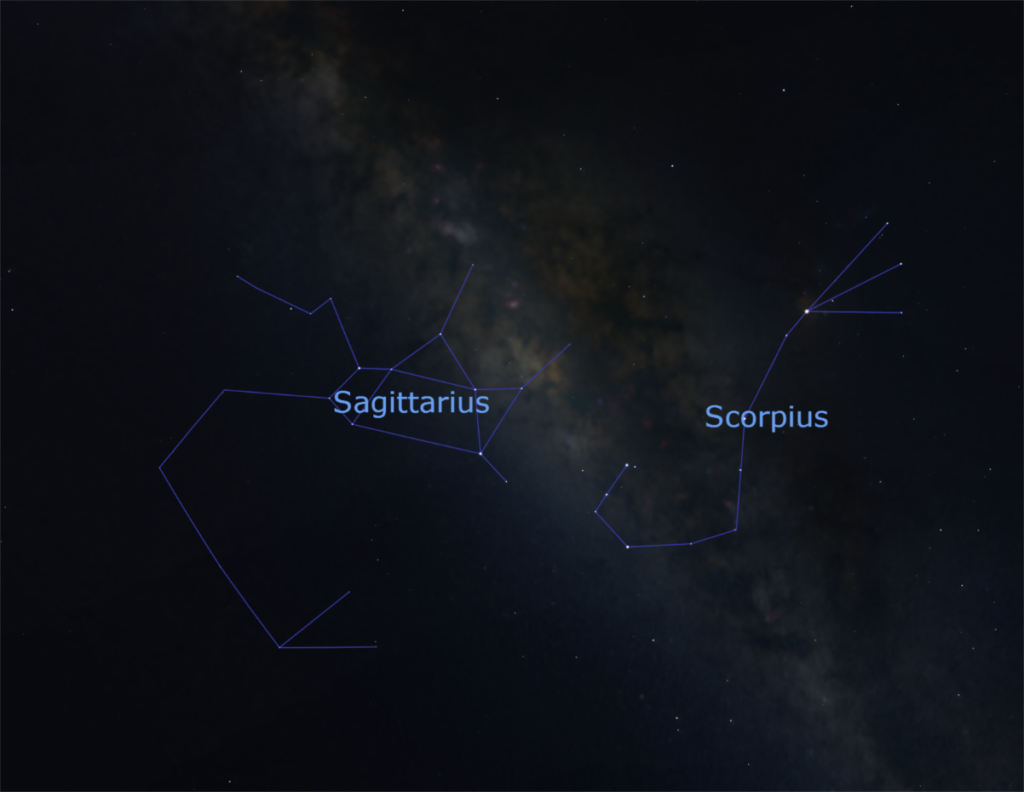
Credit: Stellarium
Facing east, Venus and Jupiter put on a show in the morning skies. All month, Venus seems to hang above the horizon, while Jupiter rises higher in the sky day by day to greet it. On the mornings of August 12 and 13 they will be within 1 degree of each other, less than the width of your thumbnail at arms length, but you can still go and look at them any day this month. Venus is the brighter one in these views.
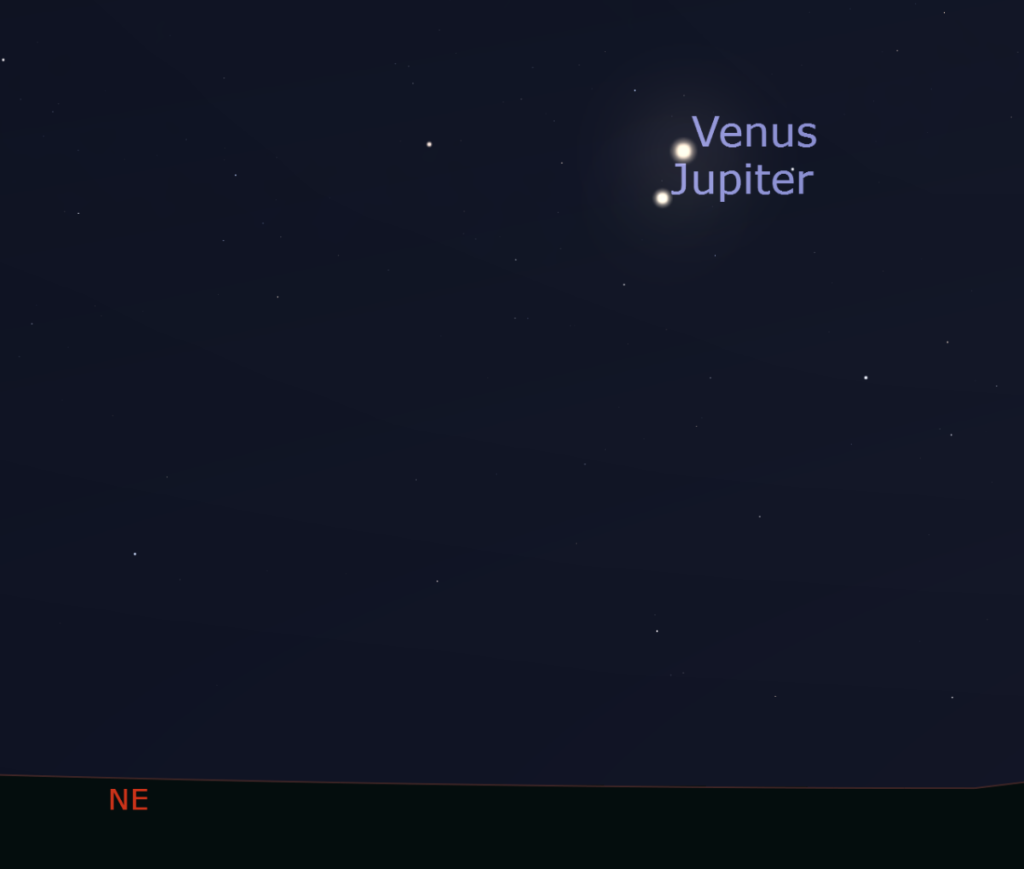
Credit: Stellarium
You might see things about the Perseid meteor shower in your news feeds this month. Unfortunately, we can’t really see much of this shower from Australia. If you live right up north or in the Top End you might see some meteors low on the northern horizon on the mornings of August 12/13. From Perth, you’re better off looking at Venus and Jupiter instead.
ISS sightings from Perth
The International Space Station passes overhead multiple times a day. Most of these passes are too faint to see but a couple of notable sightings* are:
| Date, time | Appears | Max Height | Disappears | Magnitude | Duration |
| 3 Aug 06:11 AM | 10° above SW | 53° | 10° above ENE | -3.1 | 6.5 min |
| 6 Aug 05:25 AM | 77° above NNE | 77° | 10° above NE | -3.8 | 3 min |
*Note: These predictions are only accurate a few days in advance. Check the sources linked for more precise predictions on the day of your observations.
Moon phases
First Quarter: August 1
Full Moon: August 9
Last Quarter: August 16
New Moon: August 23
Dates of interest
Aug 12: Closest encounter of Venus and Jupiter
Aug 24: 19th anniversary of Pluto being reclassified as a Dwarf Planet
Aug 28: Moon close to Mars
Planets to look for
Venus and Jupiter dominate the eastern morning sky this month. Keep your eye out for the close encounter on August 12/13. They are joined by Mercury low in the sky in the second half of the month.
Mars is there in the northwest after sunset, though it’s not very bright. It will continue to hang there for the next couple of months. Saturn is rising in the east at about 8:30pm this month so if you’re up a bit later its yellowish tinge will make for a good sight in the northeastern sky.
Constellation of the month
Norma – The Set Square
Norma is a small constellation in the southern sky and is often represented as a set square or carpenter’s square. The constellation was named by Nicolas-Loius de Lacaille, that powerhouse of constellation mappers who named 13 more constellations in addition to Norma. All of these were named after tools of the Age of Enlightenment.
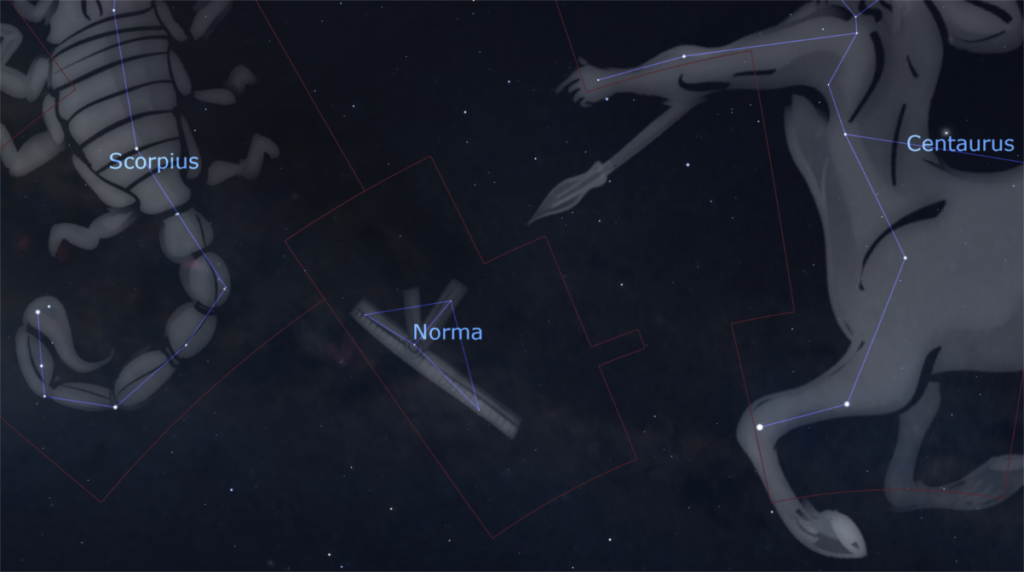
Credit: Stellarium
Norma straddles part of the Milky Way – the Norma Arm as it is called – so contains fields of countless millions of stars and also allows views outside our galaxy to the distant universe, all while being quite faint. Gamma Norma – the brightest star in the constellation – comes in at only a measly magnitude 4 and everything else in the constellation is fainter than that.
Offering a view to the distant universe, Norma contains many deep sky objects. Perhaps most visually striking is the Jellyfish Galaxy in the Norma Cluster. This galaxy is moving through a particularly dense galaxy cluster and the surrounding resistance of intergalactic gas strips material from the galaxy into a long tail. The analogy is like putting your head in front of a pedestal fan and letting it blow your hair back behind you.
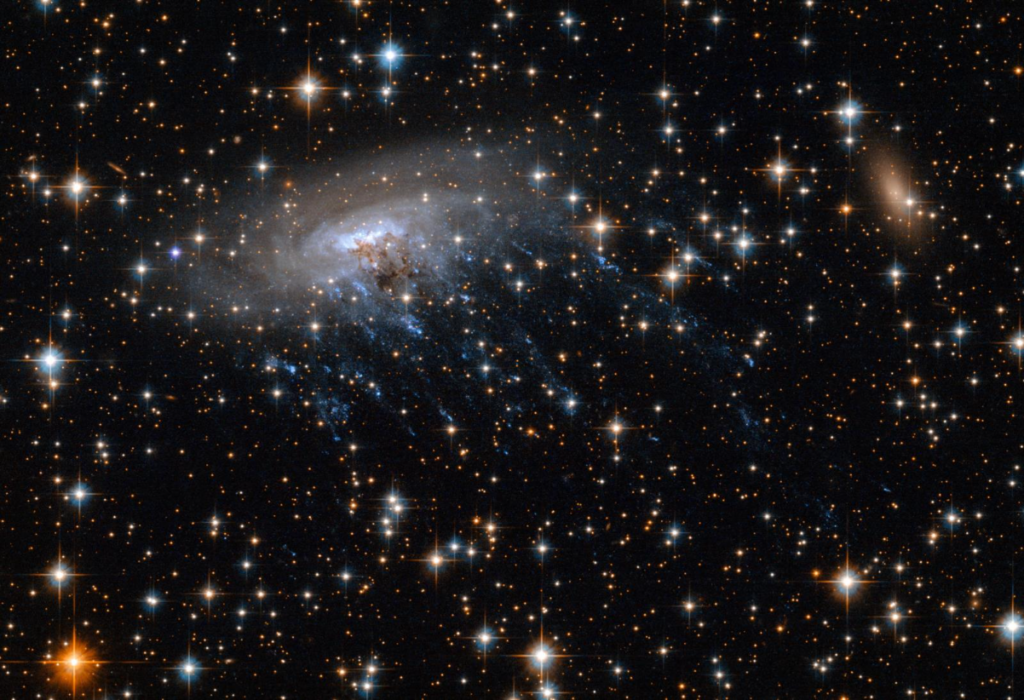
Credit: ESA/Hubble, CC BY 4.0.
Astronmers studying distant galaxies in the constellation of Norma noticed that – after accounting for the movement of the galaxies caused by the expanding universe – the galaxies were all still moving in the same direction towards… something. That something is now called the ‘Great Attractor’, whose gravity dominates the nearby universe in this direction. Unfortunately, the Great Attractor lies directly in the line of sight of the Milky Way, so is obscured by the stars and gas in our own galaxy. Further study has lead to the conclusion that the Great Attractor is the central point of an even larger supercluster of galaxies called Laniakea, of which the Milky Way is part.
Object for the small telescope
Venus and Jupiter
The close encounter of Venus and Jupiter on the morning of August 12 makes for excellent viewing in even a low powered telescope. You may even be able to resolve some of Jupiter’s moons or the phase of Venus.

Credit: Stellarium.

